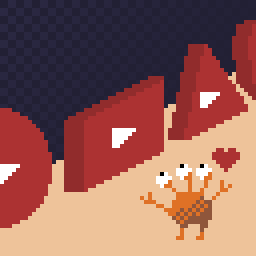Displaced Gamers’ Behind the Code series is one of the best explainers of the quirks of NES games on Youtube. It’s not afraid to dive into the assembly code itself if need be, but its videos can often be understood by people without deep technical backgrounds.
Here is their video on the coding problems with Konami’s Contra Force (24 minutes):
Watch the video for the full spiel, but here’s a summary.
Once upon a time, in the waning days of the Famicom, Konami planned to release a game called Arc Hound in Japan. It was going to be another of their trademark run-and-gun shooters, along the lines of Contra. It even received coverage in enthusiast magazines in Japan, and it probably would have used one of Konami’s bespoke mapper chips like the VRC6 that the Japanese version of Castlevania III used.
Arc Hound was likely far into development when the decision was made to not release it in the Japanese market. Producing a game cartridge requires a substantial investment in parts and marketing, of course, and they must have judged that they couldn’t make enough of a profit off of it in their home territory: the Super Famicom was already out, as well as Contra III on that platform. But the NES still had a little bit of life left in it in the US, so they decided to give the game a shot over here, as a title in the Contra series
A big problem there was Nintendo’s policies towards manufacturing NES games. Nintendo demanded the right to build all the licensed software for the NES, and further restricted most (although not all) publishers to using Nintendo’s own family of mappers. Konami had been forced to revise their games to use Nintendo’s mappers in other games: Castlevania III famously used a different mapper in Japan, one that offered greatly expanded sound capabilities that worked through the Famicom’s sound channel pass-through, but was incompatible with the NES.
Extra sound channels are nice, but the primary use for most mapper chips is bank switching, swapping different sections of a cartridge’s data into the Famicom/NES’s 6502-workalike’s 64K address space, and also potentially making different sections of the game’s graphics data visible to the PPU graphics chip.
Behind the Code’s examination of the game program reveals that a large portion of the time of each frame is spent in setting up bank switches. Whether it was coded poorly, or just that Konami didn’t want to pay to include a mapper with more a more efficient bank switching mechanism, the game wastes a lot of time just pulling in different banks of data to be visible to the NES’s hardware. So it is that Contra Force could have run a lot better, but Konami either didn’t want to expend the coding effort, or pay for the the mapping hardware, to allow it to do so.
Presumably, somewhere in Konami’s archives, there is a version of Arc Hound that uses a VRC chip to handle mapping, and that runs much more smoothly. Maybe someday it’ll come to light, although I wouldn’t lay any bets on it. More likely perhaps is that someone will hack up the code and make such a version themselves. Who knows?

